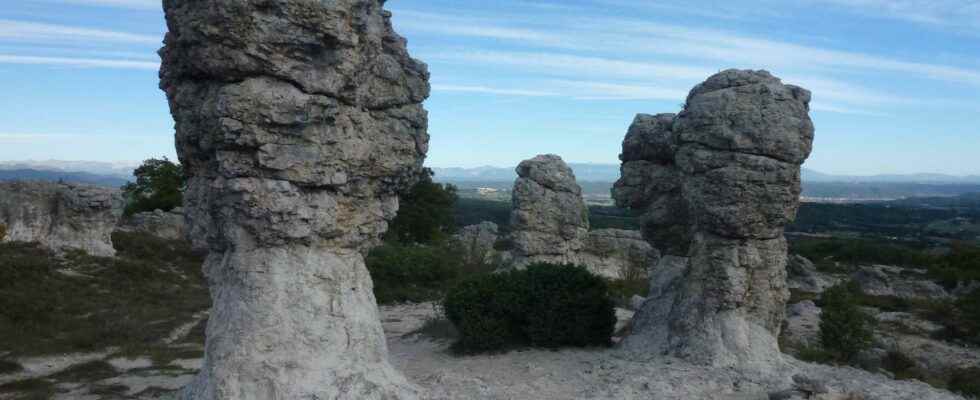You will also be interested
[EN VIDÉO] Landscapes: breathtaking images The International Landscape Photographer of the Year (ILPOTY) photo competition rewards the most beautiful landscape photos each year. Misty mountains worthy of the Lord of the Rings, winding valleys or aerial views of emaciated trees resembling a forest of toothpicks… Admire images of fascinating beauty.
In the Alpes-de-Haute-Provence, within of the Luberon Regional Natural Park and near the town of Forcalquier, there is an unusual place, populated by a forest of rocky pillars with strange and phantasmagorical shapes. The Mourres de Forcalquier dot a vast limestone plateau, rising several meters high like stone trees or immense mushrooms.
The Mourres are in fact made up of an upper part forming a kind of “hat” resting on a foot made up of softer limestone. Informed observers will not fail to draw a parallel with the well-known chimneys fairies. And they won’t be wrong, because the formation process of these mounds is relatively similar, even if the origin of the rocks of Mourres presents some specificities.
The great sculpting work of erosion
Like the classic fairy chimneys, the rocks of Mourres have indeed been sculpted by erosion. We speak more precisely of differential erosion. In the case of fairy chimneys, like the Damsels capped by Théus, located in the Durance valley, the soft rock columns are surmounted by a rocky block more resistant to erosion, which will act as an umbrella. By streaming, the rainwater will then bypass the block and erode the softer rock located around it. Thus, as and when, a column is formed protected by the block, which finds itself perched. The erosion mechanism is therefore the same for the Mourres de Forcalquier. But the nature of the hat is very particular.
To understand the origin of the Mourres, you have to go back in time to the end of theOligocene, 25 million years ago. The Luberon region was then occupied by vast lakes, bordered by deltaic and marshy areas. In this environment, develop large aquatic grass beds, which occupy the surface of the water. It is these grass beds that are at the origin of the layer of resistant rock located today at the top of the Mourres. But how can herbs create rock?
The relics of ancient aquatic grass beds
Quite simply by trapping and accumulating the limestone dissolved in the water. The photosynthesis activity of the grass beds would have in fact favored the precipitation of limestone and the formation of a hard and resistant level. All around these vegetated areas are also deposited sediment marly and chalky limestone but which will, in turn, form a much softer limestone rock. Over time, variations in the water level of the lakes allow the grass beds to develop upwards, increasing the level of indurated limestone. Subsequently, the environmental conditions change and the lakes disappear, giving way to the erosive action of the elements. The runoff water then begins to nibble the limestone rock, preferentially attacking the softer levels. As for the fairy chimneys, the hard blocks formed by the limestones trapped in the old sea grass beds protect the column of sediment located under them and the strange rocks begin to take shape.
Each rock visible today on the site is therefore the relic of a tuft from an ancient herbarium. The extension and growth of the meadows are thus at the origin of the various and sometimes strange forms of the current Mourres.
The strangeness of the site, which can be visited freely, has also strongly inspired the local populations and given birth to several legends. According to some, witches would gather in this place. Notice to walkers…
Interested in what you just read?
